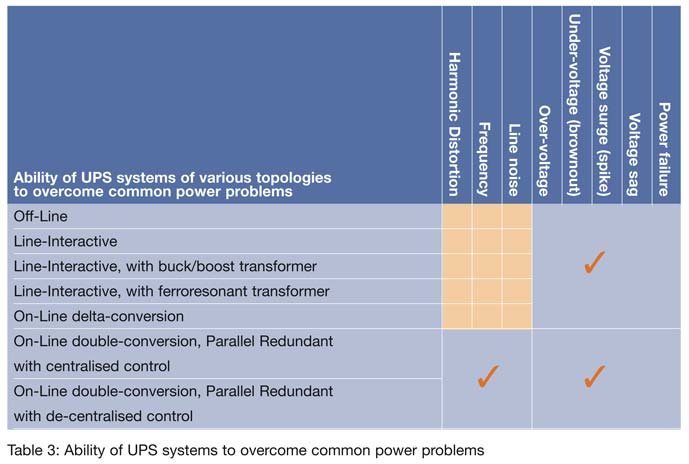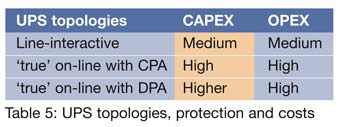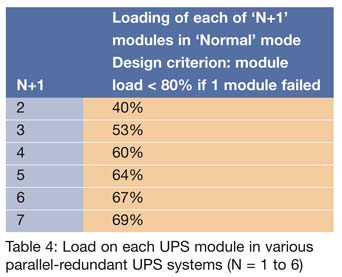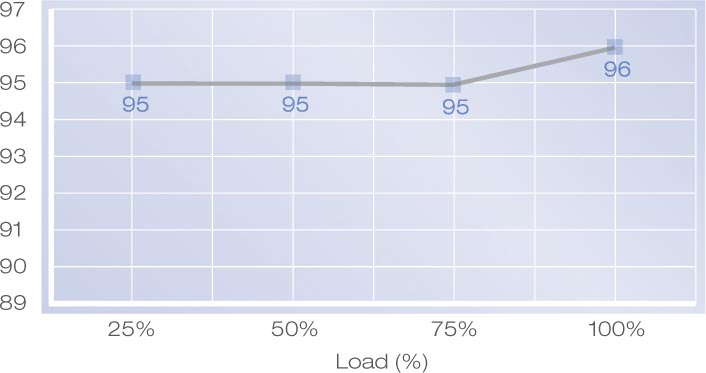 David Bond, managing director, Uninterruptible Power Supplies Limited gives advice on choosing and operating a state-of-the-art UPS
David Bond, managing director, Uninterruptible Power Supplies Limited gives advice on choosing and operating a state-of-the-art UPS
A survey published by Gartner in summer 2006 identified that 60 percent of data centres' budgets are concerned with delivering power and expelling heat.
Power consumption is rising rapidly, driven indirectly by legislation enacted to promote improvements of corporate accountability, and by UK public bodies fulfilling expectations to provide an ever increasing number of IT services 24 hours per day with little or no down-time.
Corporations are having to strike a balance between complying with the government's vision for them to consider the economic, social and environmental impacts of their activities, to become more aware of their corporate social responsibilities (CSR), and delivering the highest possible level of systems availability demanded by their customers.
The opportunities for their data centres to minimise their carbon footprint lie in maximizing the efficiency of their uninterruptible infrastructure. Against this back-drop, the 'partial load' efficiency of UPS systems can be examined objectively, using the method introduced and promoted by The Uptime Institute.
Its 'Performance Standard' Tiers provide an objective basis for comparing the uninterruptible infrastructural components, including uninterruptible power supply (UPS) systems, of sites, including data centres, and the companies that use them.
All computer sites fall into one of four categories designated 'Tiers I to IV'. Each is defined in terms of a set of performance standards for the 'Tier Requirements'. Each industry has a unique uptime need driving the site infrastructure Tier required.
The sites and the profiles of the companies that use them are described in Table 1 and Table 2 below.


Only 'true' on-line double-conversion UPS topology provides protection against the eight common causes of primary AC power outages [Table 3 below]. Two variants have centralised parallel architecture (CPA) and de-centralised parallel architecture (DPA).

The CPA variant, on account of its central static switch (CSS), which must be considered to be a single-point-of-failure, cannot be ranked higher than Tier III.
The 'true' on-line UPS system with DPA has a static switch for each of its UPS modules. It offers the highest level of availability (itself and its critical load) and the only UPS topology that merits Tier IV ranking. Highest availability comes at a price - high capital expenditure (CAPEX) and even higher operating expenditure (OPEX). The CAPEX~OPEX trade-offs are shown in Table 5 below.

State-of-the-art 'true' on-line double-conversion UPS modules deliver:
High (double-conversion) efficiency: See Figure 1.
Near Unity Input power factor: See Figure 2.
Low THDi: See Figure 3.
Ability to supply 'blade server' loads without de-rating: See Figure 4.
During normal operation, parallel-redundant UPS systems are partially loaded. The partial loading of various 'N+1'configurations, is compared in Table 4 below.

As the four 'efficiency' graphs illustrate, the higher a UPS module is loaded, the more efficiently it operates. Surveys conducted by industry analysts have found that the median value of 'partial loads' of UPS systems in 'Tier IV' data centres is between 30 and 40 percent.
The wasteful gap between installed UPS system capacity and the size of the actual critical load is illustrated in Figure 5. There is huge potential to reduce electricity consumption of data centres, and to alleviate the burden on their stretched cooling systems, by continually matching the capacity of UPS systems to their respective critical loads.
The UPS feature that has the potential to deliver these benefits is "right-sizeability", and its currency is the 'hot pluggable' UPS module (also known as the 'hot swappable' UPS module).
Inserting and removing 'hot-swappable' UPS modules facilitate "right-sizing" a UPS system to its anticipated critical load. The trend for the size of critical loads, especially those within data centres, is to increase, however, right-sizing to a decreasing load is equally easy.
Figure 1: UPS module double-converts power efficiently when supplying partial or full loads.

Figure 2: UPS module has near unity input-power-factor when supplying partial or full loads.

Figure 3: Input of UPS module has low Total Harmonic Distortion (THDi) when supplying partial or full loads.

Figure 4: 'Blade-server friendly' UPS module supplies load that has input-power-factors in the range 0.9 lagging to 0.9 leading, without de-rating.

Figure 5: The modular and scaleable design of the PowerWAVE9000DPA is easily reconfigured to increase the UPS power in cost-effective incremental steps to match the needs of the critical load.


Add a Comment
No messages on this article yet